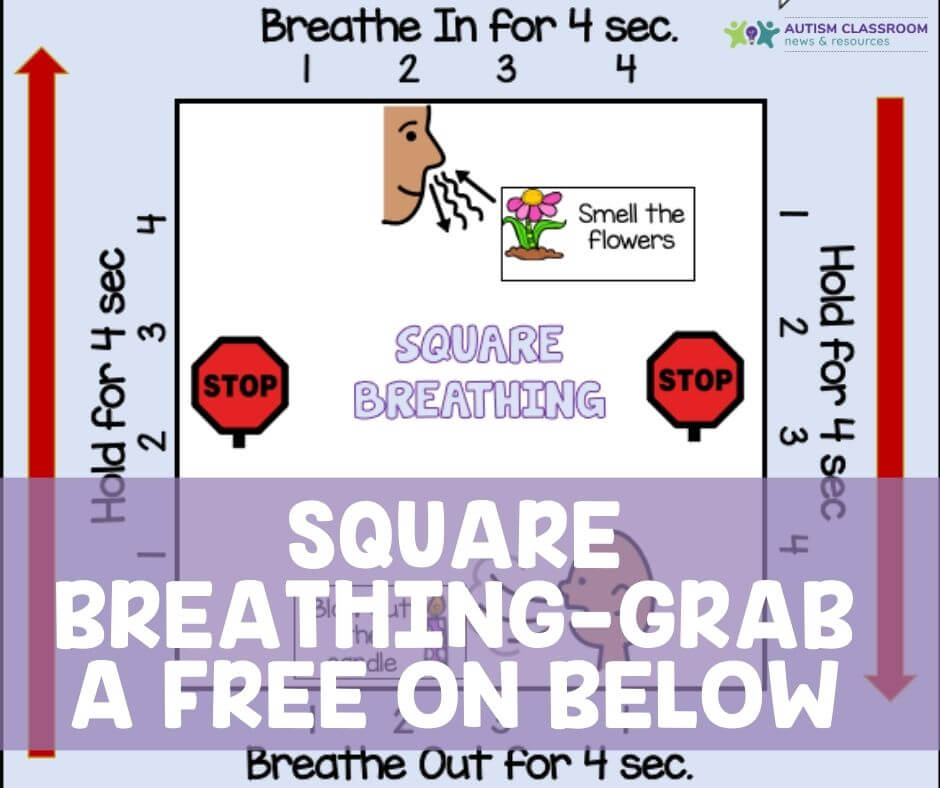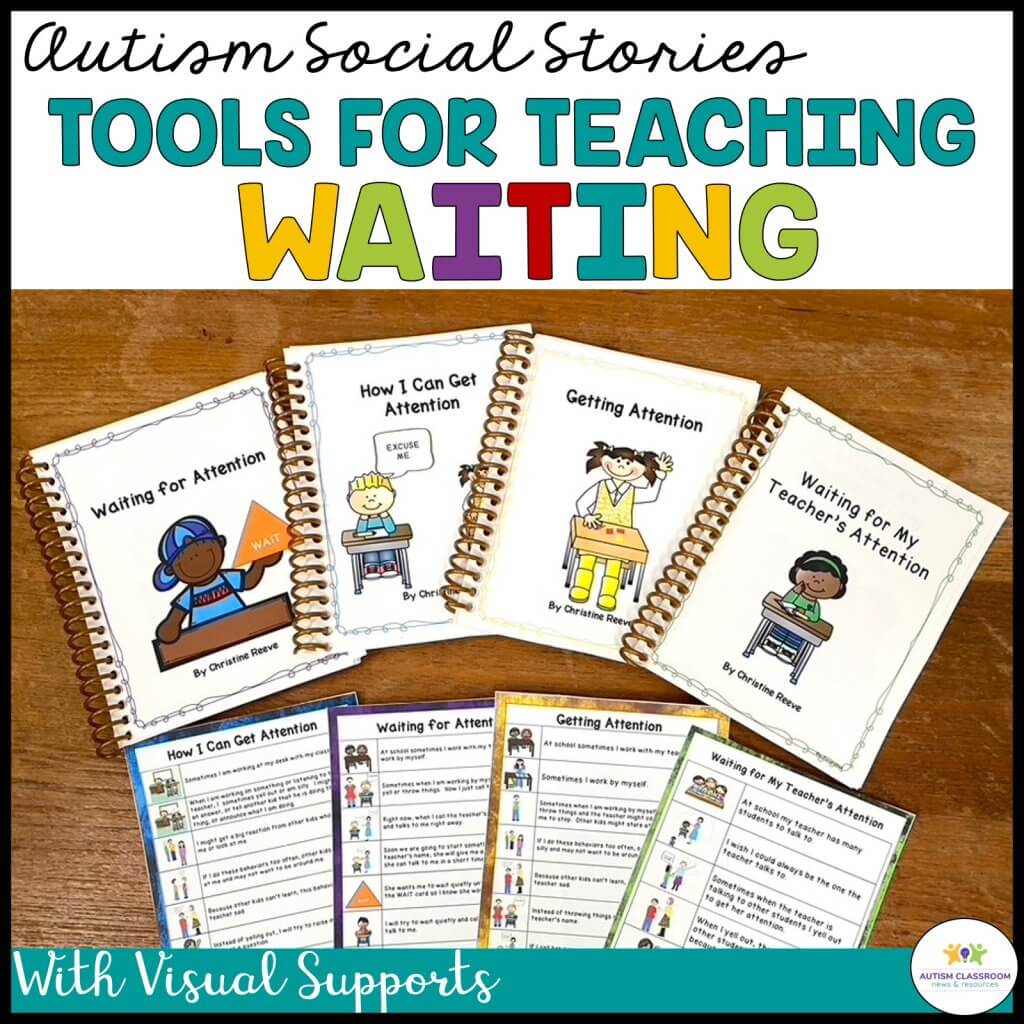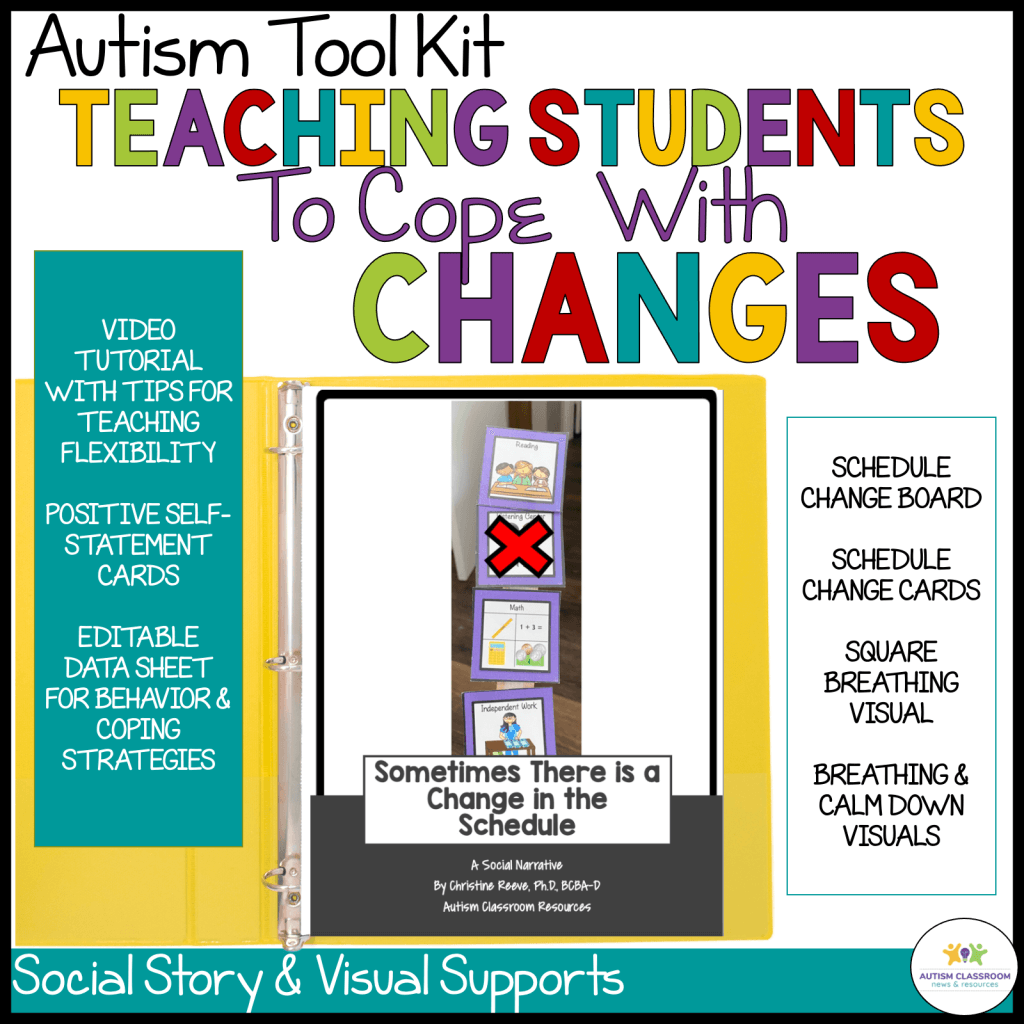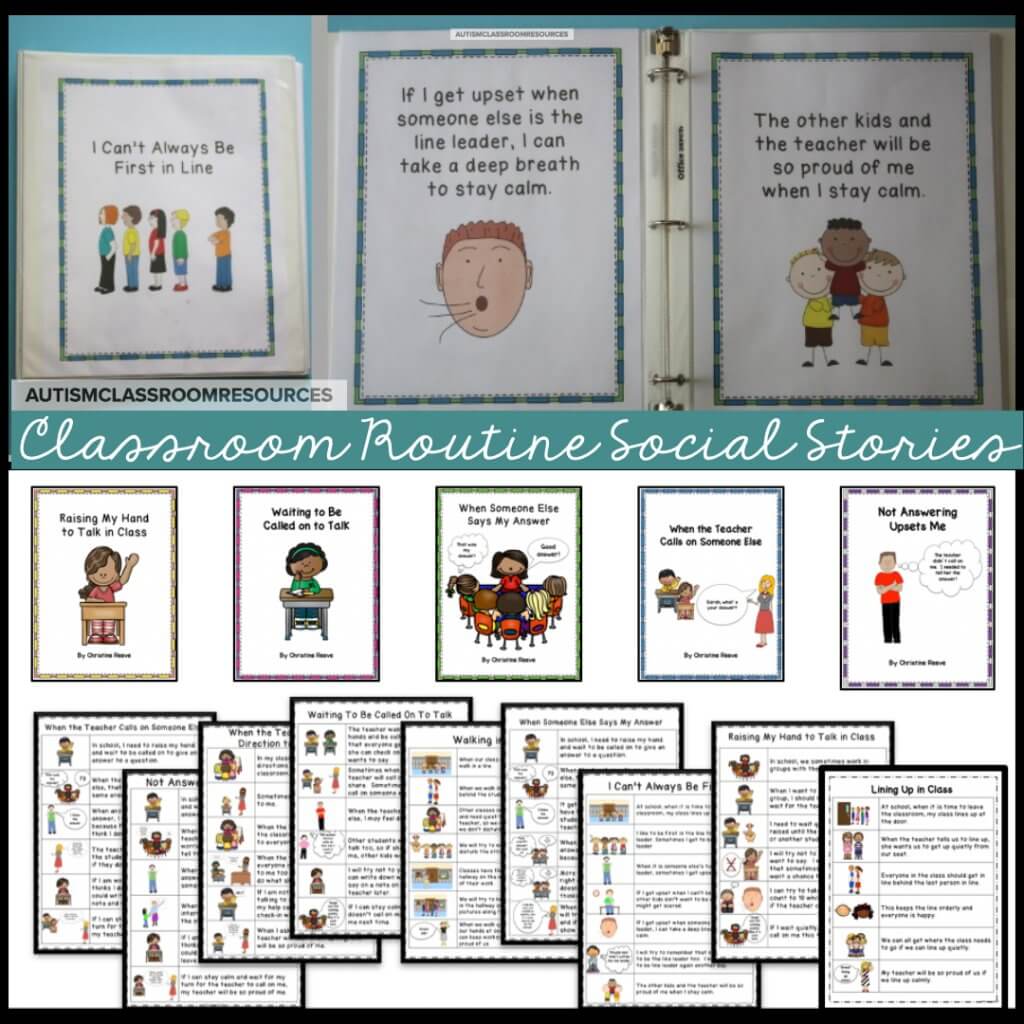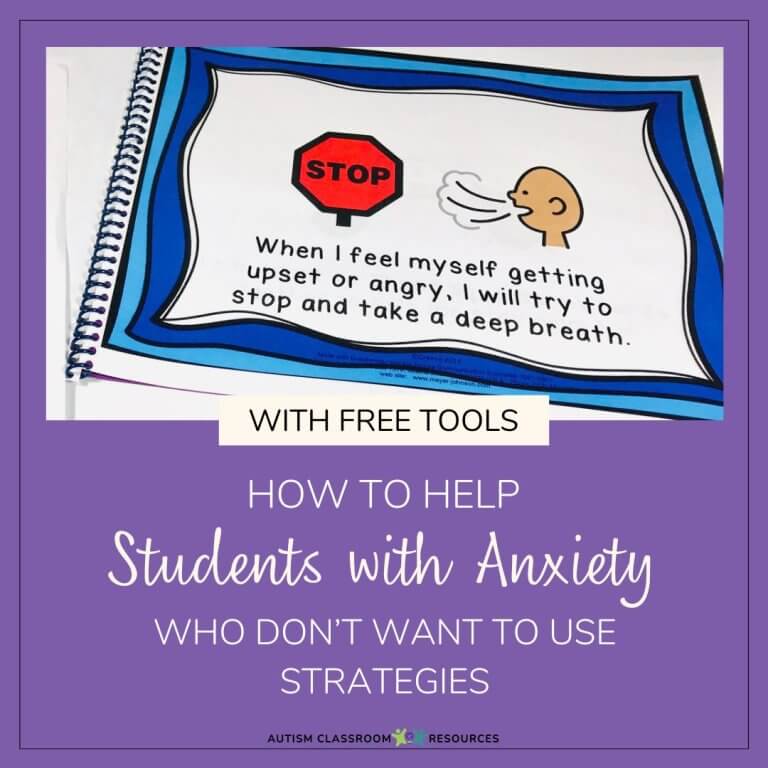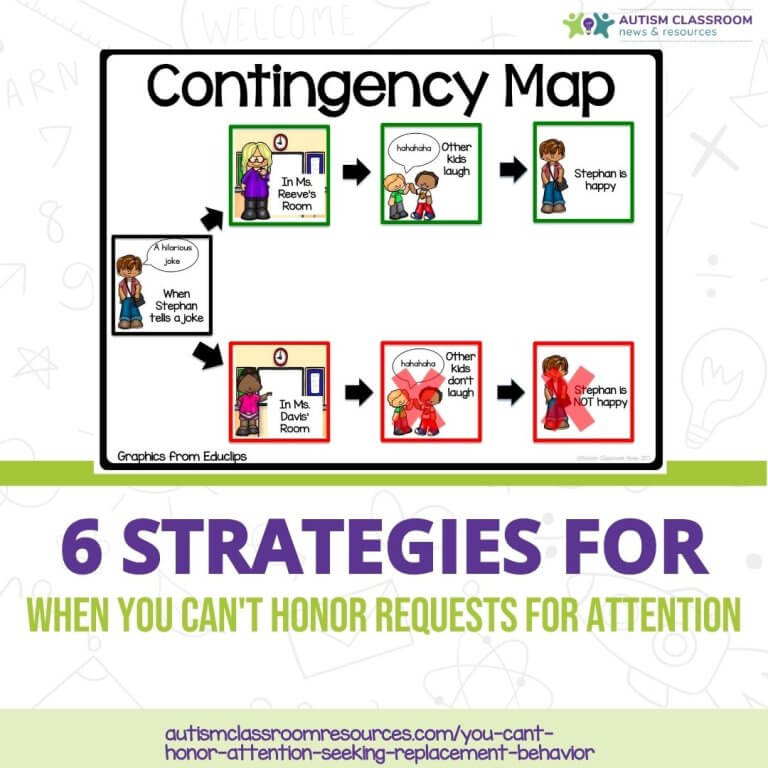Sharing is caring!
Learning how to reduce anxiety can be difficult for many students. But it can be particularly difficult for students with autism and communication disabilities because it’s such an abstract concept.
Learning to express and recognize feelings can be a difficult skill, so learning to recognize them and use strategies to reduce the anxiety can be even harder. Luckily there are a number of strategies that have been proven to be effective for most people. And some are part of evidence-based practices for stress reduction in autism specifically.
Use Social Stories to Reduce Anxiety
Social stories are an evidence-based practice (sometimes called social narratives) that can reduce anxiety. I have written about social stories several times and they are included in most of my behavioral toolkits in my store. Social stories aren’t usually used in isolation. And they are not a “cure” to the problem. However, they can be really useful tools in helping students understand perspectives of others, what to expect in a situation, and how and why engaging in some strategies or behaviors is important. They also can help students (and any students with communication difficulties) be able to better talk about situations that make them anxious.

When using social stories I typically make them so they include much more informational statements that directions. I also include more of a focus on the function of any behaviors I’m addressing. Some research indicates that the use of an FBA and focusing on the function of the behavior makes them more effective.
It’s also important to note that with social stories, you probably want to target the behaviors you want to TEACH rather than writing a social story about just being less anxious. If you have ever experienced anxiety, then you know that just telling you to calm down, probably wasn’t very helpful.
Teach Self-Regulation With Visuals
Another proven strategy for reducing anxiety is teaching students to recognize when anxiety is rising. Then you can teach them strategies to help it recede. This is pretty abstract stuff, and it can be difficult for some of our students with communication issues. So, adding visuals to the instruction can help it to be more complete.
One strategy that I like to use for self-regulation is the Incredible 5-Point Scale. This strategy was developed by Kari Dunn Buron and makes recognizing and talking about emotions and feelings more concrete. I’ve talked about some of the reasons I think the 5-point scale a great strategy in this post.

One particular reason I like it is that it focuses on connecting feelings (represented by numbers) with actions to address them (e.g., breathing strategies). This helps students take that next crucial step in self-regulation and take action.
Teach Breathing Exercises to Reduce Anxiety
Teaching breathing exercises, like taking deep breaths, is another area that is a common strategy for reducing anxiety. However, like identifying feelings, it’s not very concrete, and students with autism often have difficulty enacting them correctly.
Many students I’ve worked with tend to hyperventilate rather than breathing deeply. This of course makes their anxiety worse, not better.
Like with the 5-point scale, I add visuals here. Below are 2 examples of visuals for breathing. The first is from the Calm Down Tools for Self-Regulation Toolkit. It’s great for preparing a student to go into an activity that might increase anxiety.
The second picture is a strategy known as Square Breathing. I love this because while it’s a bit more complex than the one above, it really demonstrates how to take a breath and hold it. Some people call it 4-second breathing because you hold and release your breath for a count of 4.
And you can grab a free Square Breathing Visual in the Free Resource Library. Just sign up for free and you can grab the visual and lots of other materials that can help in your classroom. And you’ll get some emails from me for helpful tips and other free tools.
sign up for free tips each week in your inbox and Grab a free set of visual rules from the resource library

Grab the visual from the Free Resource Library. Click below to navigate and log in or join the free library.
Positive Self-Statements are Another Tool to Reduce Anxiety
Positive self-statements are a strategy I haven’t talked a ton about in the past. However, for students who have anxiety and possible depression (in particular) they can be really helpful in helping them stay calm.
Many times anxiety is sparked by internal beliefs of not having control or not being able to handle something. Self-statements, practiced when the student is calm, can help to boost confidence, remind them what they can focus on, and remind them of options they can use to handle the situation without a meltdown.

Self-statements are part of cognitive-behavioral therapy, which has been shown to be an evidence-based practice for many individuals with autism. The ones above are part of the Coping with Changes Behavioral Toolkit in my store.
Providing Support to Prevent and Reduce Anxiety Instead of Consequences
Finally, the most important tool we have to reduce a student’s anxiety is our own behavior. Many times anxiety results in meltdowns (or come-aparts as my friends in the South like to call them) that look like tantrums.
Think back to a time that you were really concerned or even anxious about someting and found yourself crying for no reason. Or a time when you yelled at someone but you realized you weren’t mad at them but frustrated or worried about something.
If someone had addressed you in a way to punish or reprimand your behavior, it probably wouldn’t have stopped it and it wouldn’t have been helpful. In fact, in the case of someone whose behavior looks like anger, it can actually lead to more serious problem behavior.
So, when you are working with a student who has anxiety attacks or melts down regularly, think about WHY it might be happening. This is fundamental for all types of challenging behavior, that we understand the why behind it.
In the case of possible anxiety driving the behavior, we have the opportunity to intervene and prevent more serious behaviors. But if we yell, become upset or try to reprimand the student to behave, it doesn’t teach the student anything and it’s likely to backfire.
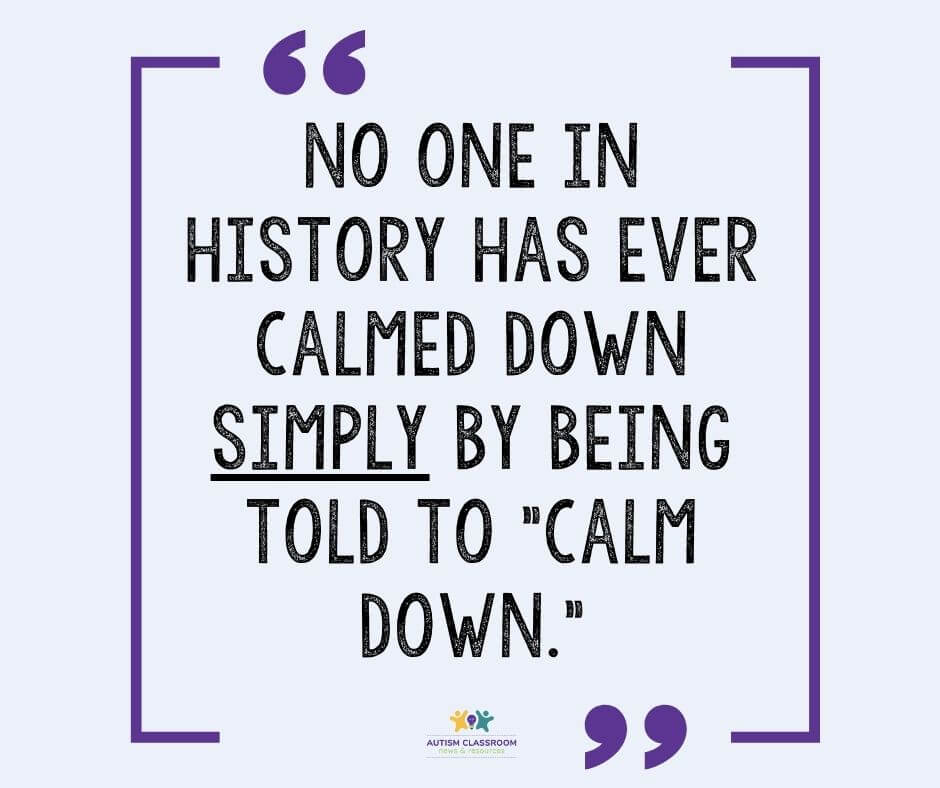
Instead, if we approach it with the strategies listed above, among others, we have the opportunity to help the student calm down more quickly in the moment. And then we can put further strategies in place to help the student avoid the issue in the future.
Looking for Ready-Made Tools?
If you are looking for ready-made tools to save you time in coming up with your own for address anxiety and other behaviors, check out the resources below in my TpT, that include these strategies to address specific functions of the behavior, like anxiety around making mistakes. Just click on the picture to check them out in my store.




